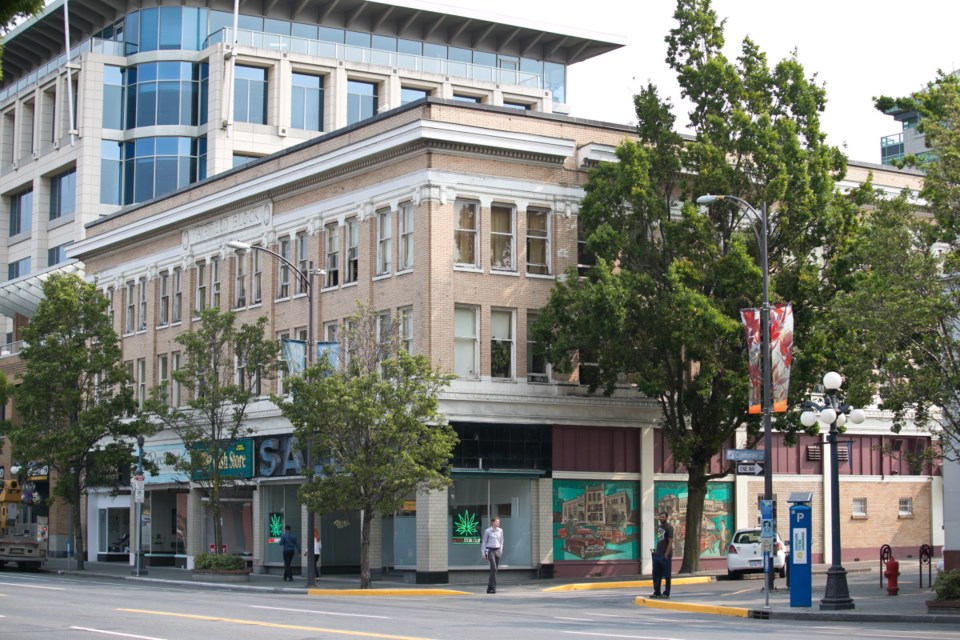Victoria Mayor Lisa Helps is pondering the kind of carrots needed to attract creative developers to buy the historic Fairfield Block in downtown Victoria.
She is floating the idea of incorporating low-income rooming house units in a new development also containing condominiums.
Flexibility, creativity and out-of-the-box thinking would be needed for such a project, Helps said.
The 103-year-old, three-storey building at the corner of Douglas and Cormorant streets consists of ground-floor commercial space, topped by 61 rooming-house units.
Listed at $3.6 million, it has been for sale for more than a year, going on the market for the first time since it was built.
Helps, who has spoken to developers about the building, believes there is a way to have the Fairfield Block redeveloped, provided council is flexible.
As a heritage building, the Fairfield Block would remain, she said. Redevelopment could “potentially add height and density to the existing footprint and incorporate those single-room-occupancy units as part as any new development.”
The Fairfield Block’s rooms are rented on a monthly basis, with common washrooms. Rents run from $375 to $475 per month, a Colliers International marketing brochure states.
Under its existing zoning, another 17,000 square feet could be added.
The building has been maintained and has received some upgrading but more improvements would be needed, Ty Whittaker, one of Colliers’ listing agents, said.
Helps noted that the city has an affordable housing trust fund.
“Wouldn’t it be amazing if those people who live in that single-room occupancy building could be co-located with people who live in brand-new, fancy condominiums? That’s the kind of city I’m looking for,” she said. “It’s a huge opportunity.”
Social and market-housing projects have been integrated before. Some Victoria-area projects, such as Dockside Green, include plans for condominiums and affordable housing on the same site.
Vancouver has 15 projects —11 completed and four under construction — that combine social housing with market condo housing in the same structure, said Sara Couper, communications co-ordinator with the city of Vancouver.
One of the best-known is the Woodwards development downtown, where supportive housing and condos were built as part of the same project.
In Portland, Oregon, a request for proposals was issued for a developer to create at least 200 affordable homes, plus market-rate housing, and commercial space in an urban renewal area. Up to 90 per cent of the units will be affordable to households earning less than 30 per cent of the median family income, according to the Portland Housing Bureau.
The project is to be built on land owned by the Portland Development Commission, working in partnership with the Housing Bureau. It’s expected to help homeless veterans and to give low-income families quality housing. The Portland Development Commission’s work includes renovation of some of the community’s most prominent historic buildings.
In Victoria, Coun. Pamela Madoff said that the Centra Gas Building, at Douglas and Fisgard streets, was designed to respond to the architecture on the Fairfield Block and the Hudson building.
The Fairfield Block was built in 1912 by Arthur Lineham and Ronald Grant, partners in Grant and Lineham real estate. Lineham also served on Victoria council and was manager of the B.C. Light and Power Company.
The Fairfield Block is one of the few remaining examples of works by architect H.S. Griffith, said the website Canada’s Historic Places, a collaboration of senior governments.
It is a “solid example of the type of large-scale, commercial building constructed in Victoria during the prosperous years prior to the First World War,” the website states.



